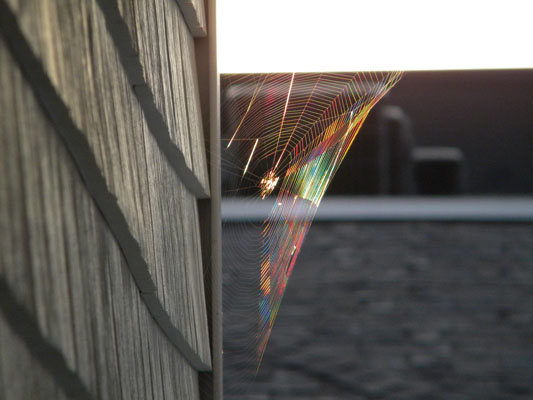The Web of Refraction by Inkisar S Anwar
Honorable - Natural Category
School: Fox Chapel Area High School
Teacher: Dan Malone
Rainbows are an amazing site to behold yet one may not realize that the laws that apply to them also apply to so many other things around us. We can see the laws play out in some of the most unusual places, in this case, a spider web. This picture was taken at the time of sunrise when the web has a layer of dew covering it. When the light passes into a medium at an angle, the light beam is bent or refracted according to Snell's Law, which is a formula that describes the relationship between the angle of incidence and refraction. Light of higher frequency is refracted less than that of a lower frequency. Thus, each wavelength is refracted at a slightly different angle when passing through a medium. Another factor that plays into this natural phenomenon is the speed of the waves. The wave theory states that light is refracted because its wave also changes speed as they pass through a substance. This theory assumes that the speed of light waves is decreased on entering the substance. As each part of the wave enters the dew it slows down and causes the refraction. Since the sunlight we see is made up of waves of all colors, they are all projected into different angles. This in turn causes us to see the colors that we do on the cobweb.



